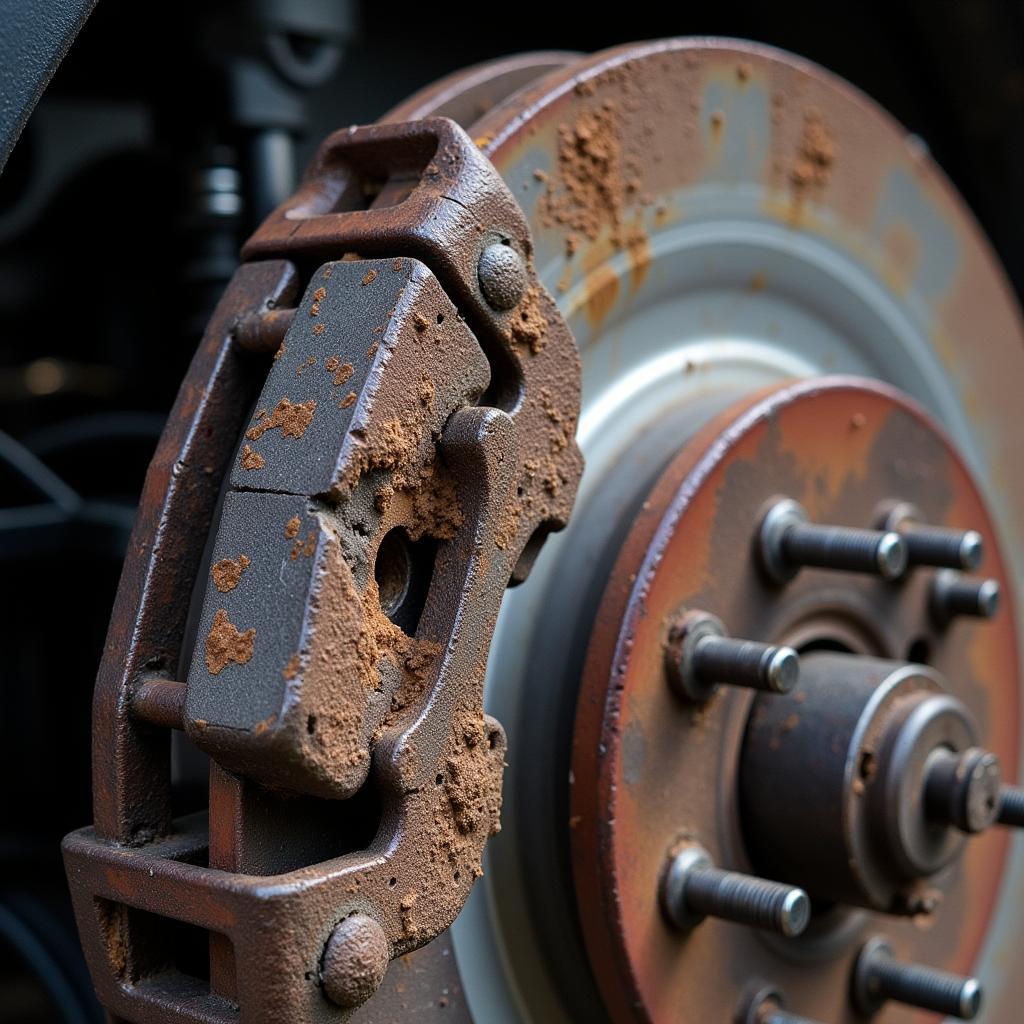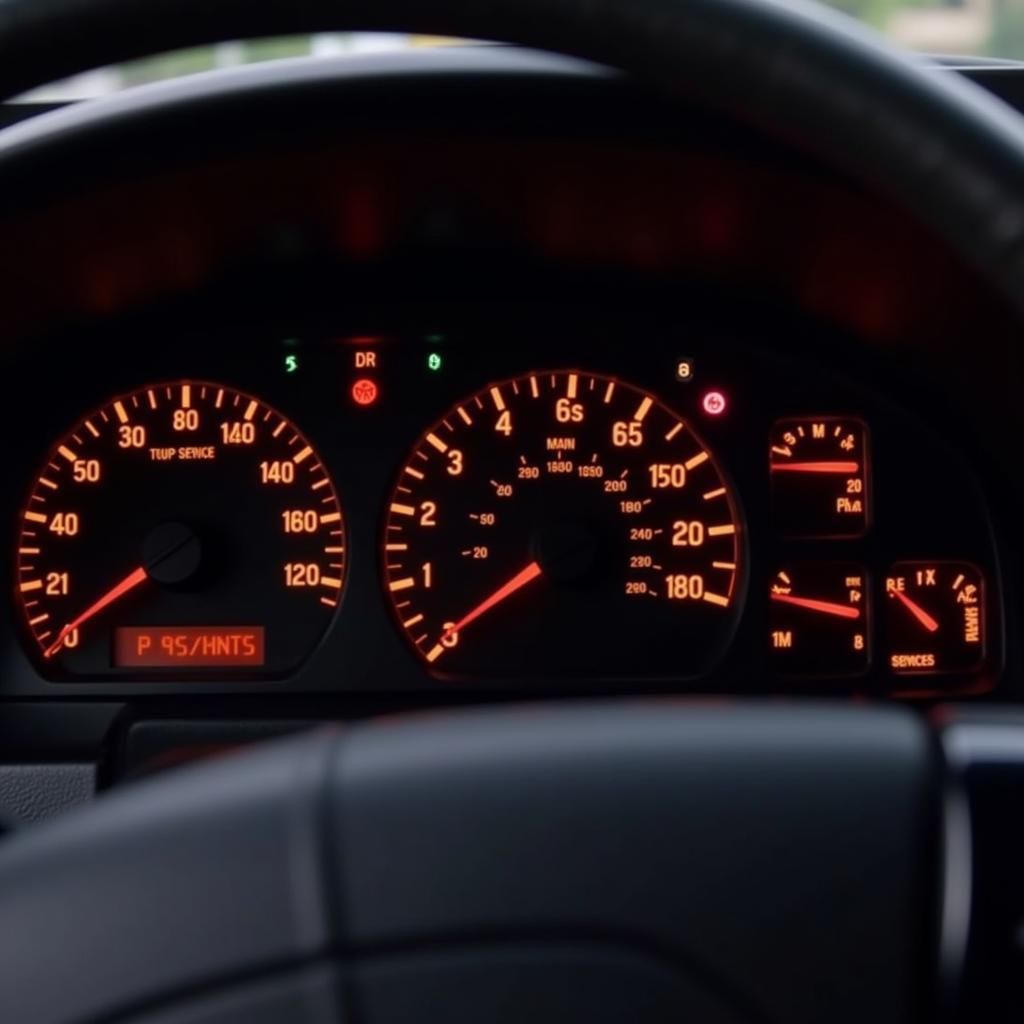The brake system warning light on your Honda Odyssey is a critical indicator that shouldn’t be ignored. It signals a potential problem within your braking system, ranging from low brake fluid to more serious issues. Addressing this promptly is crucial for your safety and the longevity of your vehicle. This guide will help you understand the common causes of the brake system warning light in a Honda Odyssey and offer potential solutions.
If you’re unsure about any aspect of brake repair, consult a qualified mechanic. Brake systems are complex and require specialized knowledge for proper diagnosis and repair. Even seemingly minor issues can escalate if not addressed correctly. See our guide on the brake lamp indicator warning light for more information on related warning lights.
Understanding Your Honda Odyssey’s Brake Warning Light
The brake warning light is designed to alert you to potential issues. It can illuminate for several reasons, and understanding the nuances can save you time and money. Sometimes, the light might be triggered by something as simple as engaging the parking brake. However, it can also indicate more serious problems like low brake fluid, worn brake pads, or a malfunctioning ABS system.
Common Causes of the Brake System Warning Light
Several factors can trigger the brake system warning light in your Honda Odyssey. These include:
- Low Brake Fluid: This is the most common culprit. Low brake fluid can be caused by leaks in the brake lines or worn brake pads.
- Worn Brake Pads: As brake pads wear down, the brake fluid level drops. If the pads are excessively worn, the warning light will illuminate.
- Faulty ABS System: A problem with the Anti-lock Braking System (ABS) can also trigger the warning light. This might be indicated by a separate ABS warning light as well.
- Parking Brake Engaged: Sometimes the simplest explanation is the correct one. Make sure your parking brake isn’t engaged.
- Faulty Brake Light Switch: While related to the brake system, a faulty brake light switch can also sometimes trigger the warning light. You may notice your brake lights aren’t working if this is the case. For models like the 2002 Odyssey, you can find more information about the brake light warning light on our dedicated page.
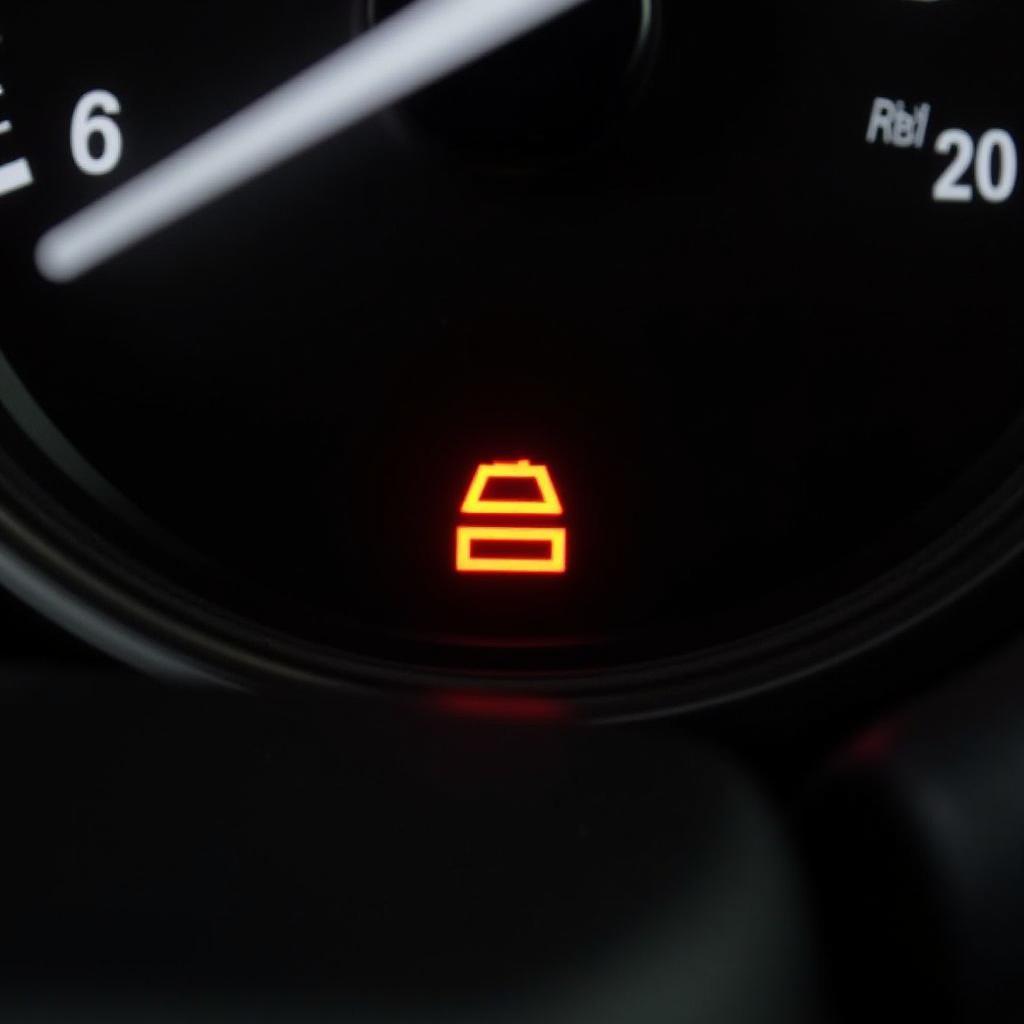 Honda Odyssey Brake System Warning Light Illuminated
Honda Odyssey Brake System Warning Light Illuminated
Troubleshooting the Brake Warning Light
Before rushing to a mechanic, there are a few checks you can perform yourself:
- Check the Parking Brake: Ensure the parking brake is fully disengaged.
- Inspect the Brake Fluid Level: Locate the brake fluid reservoir under the hood and check the fluid level. It should be between the minimum and maximum markers. If it’s low, carefully add the correct type of brake fluid. For help with this on a 2003 Honda Odyssey, refer to our guide on 2003 Honda Odyssey brakes warning symbols.
- Check for Leaks: Inspect the brake lines and calipers for any signs of leaks. Look for wet spots or dripping fluid.
- Listen for Unusual Noises: When applying the brakes, listen for any grinding, squealing, or other unusual noises. These could indicate worn brake pads.
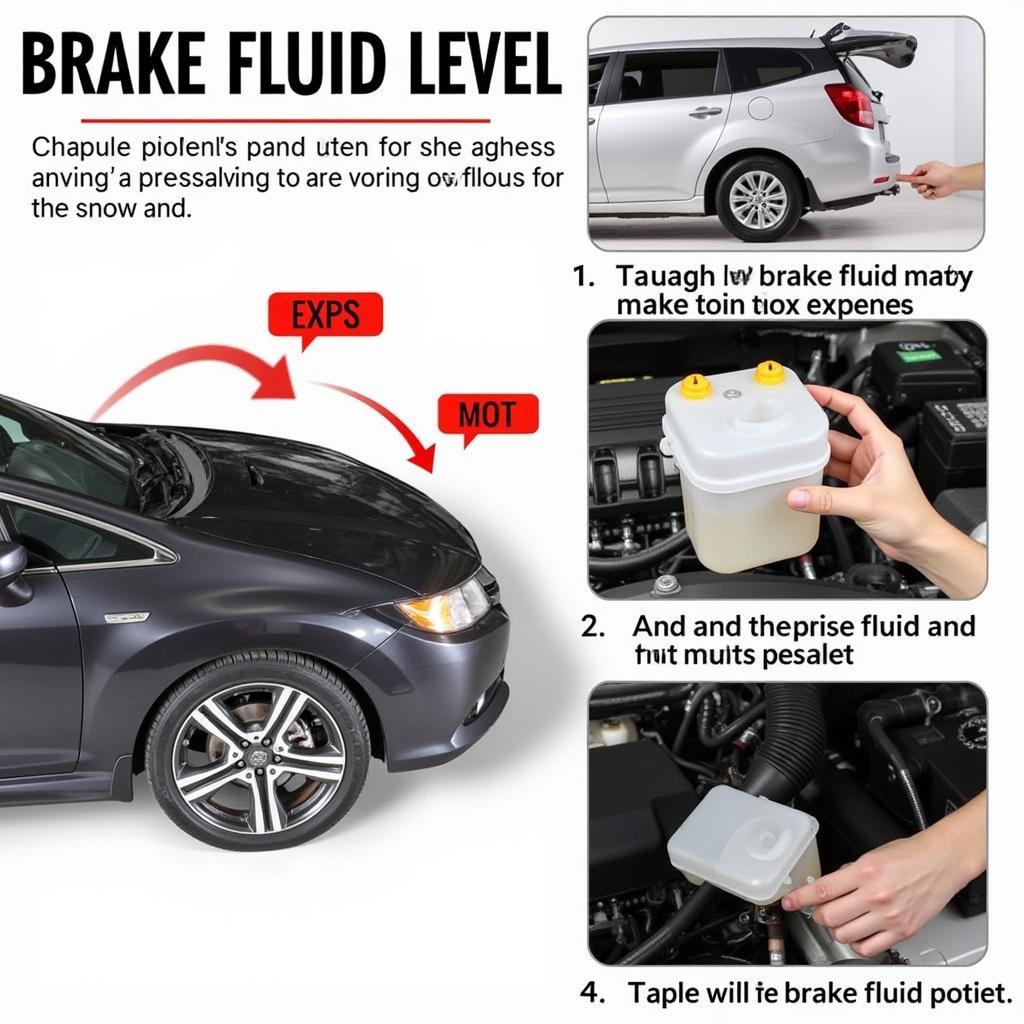 Checking Brake Fluid Level in a Honda Odyssey
Checking Brake Fluid Level in a Honda Odyssey
When to Seek Professional Help
If the brake warning light remains on after performing these checks, it’s crucial to seek professional help immediately. Driving with a faulty brake system is extremely dangerous. A qualified mechanic can diagnose the problem accurately and perform the necessary repairs. For issues with the brake lamp warning light on a 1999 Odyssey, our guide on 1999 Odyssey brake lamp warning light can offer helpful insights.
“Ignoring the brake warning light is like ignoring a ticking time bomb,” says John Davis, a seasoned automotive technician with over 20 years of experience. “It’s always better to err on the side of caution and have your brakes inspected by a professional.”
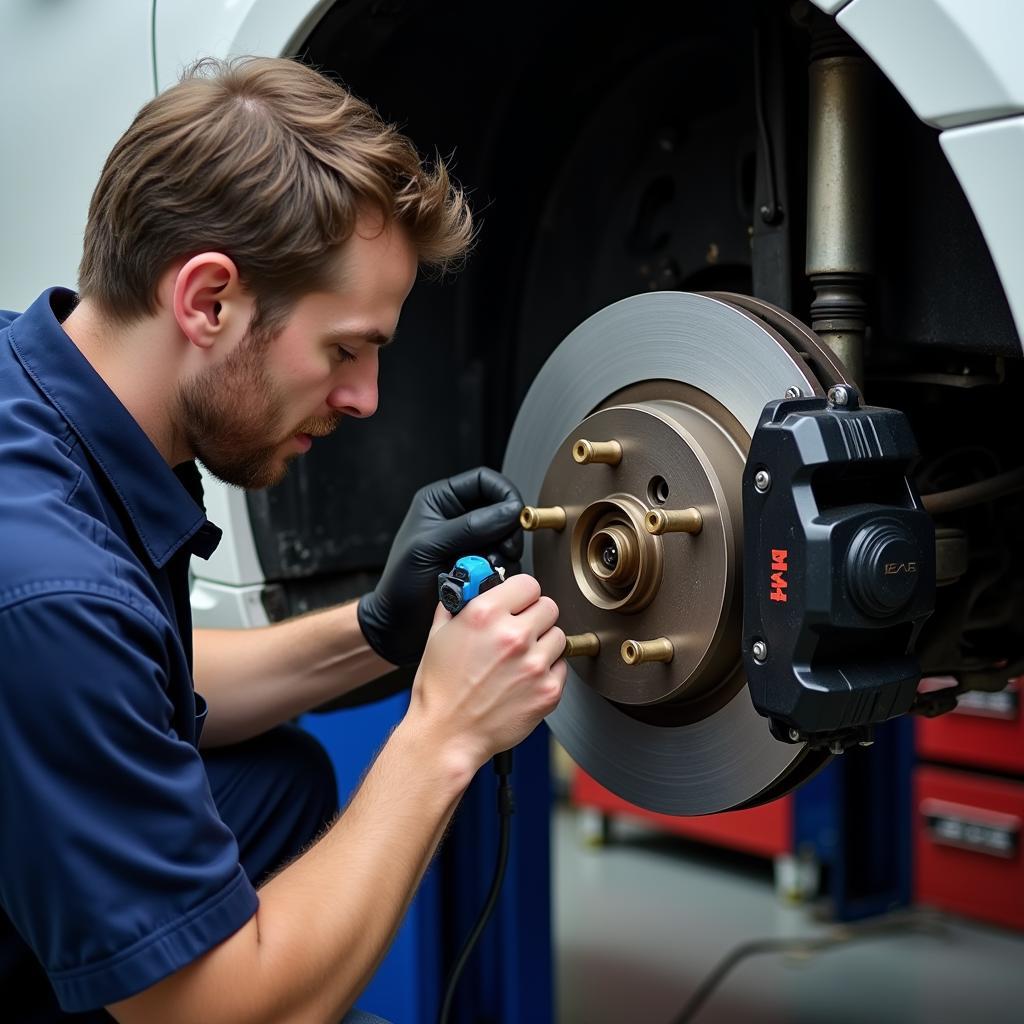 Mechanic Inspecting Honda Odyssey Brakes
Mechanic Inspecting Honda Odyssey Brakes
Conclusion
The brake system warning light in your Honda Odyssey is a vital safety feature. Understanding its potential causes and knowing how to troubleshoot basic issues can help you maintain your vehicle’s safety and performance. However, always prioritize safety and consult a professional if the problem persists. Remember, a properly functioning brake system is essential for your safety on the road. Don’t delay addressing this crucial warning. Check out our resource on the 2003 Honda Odyssey brake lamp warning light for further assistance.
FAQ
- What does the brake warning light mean? The brake warning light indicates a potential problem with your braking system, such as low brake fluid, worn brake pads, or a faulty ABS system.
- Can I drive with the brake warning light on? It’s highly discouraged. Driving with a faulty brake system is dangerous. Seek professional help immediately.
- How do I check my brake fluid level? Locate the brake fluid reservoir under the hood and check the fluid level against the minimum and maximum markers.
- What should I do if my brake fluid is low? Carefully add the correct type of brake fluid. If the level continues to drop, there’s likely a leak that needs professional attention.
- What if my brake warning light is on and my parking brake is off? This indicates a more serious problem, and you should have your brakes inspected by a mechanic.
- Can a faulty brake light switch trigger the brake warning light? Yes, sometimes a faulty brake light switch can also activate the brake warning light.
- How often should I have my brakes checked? It’s recommended to have your brakes inspected at least once a year or every 12,000 miles.


